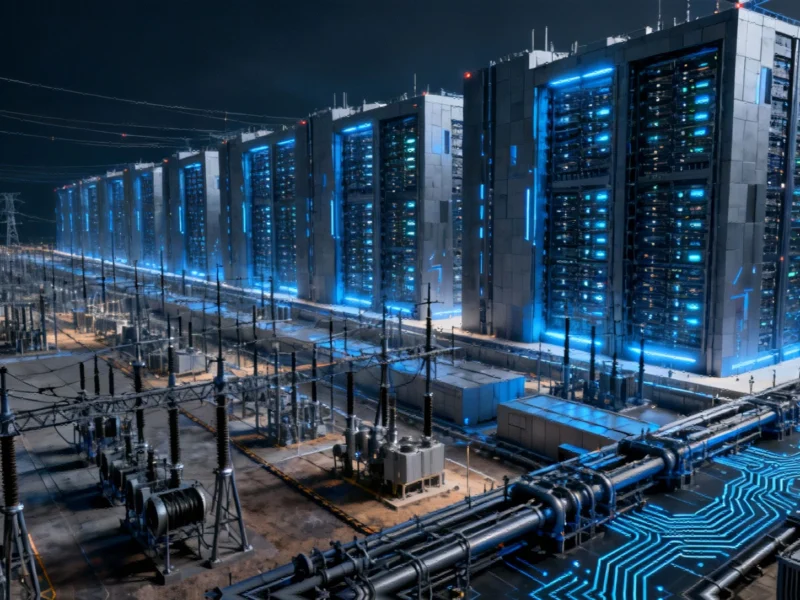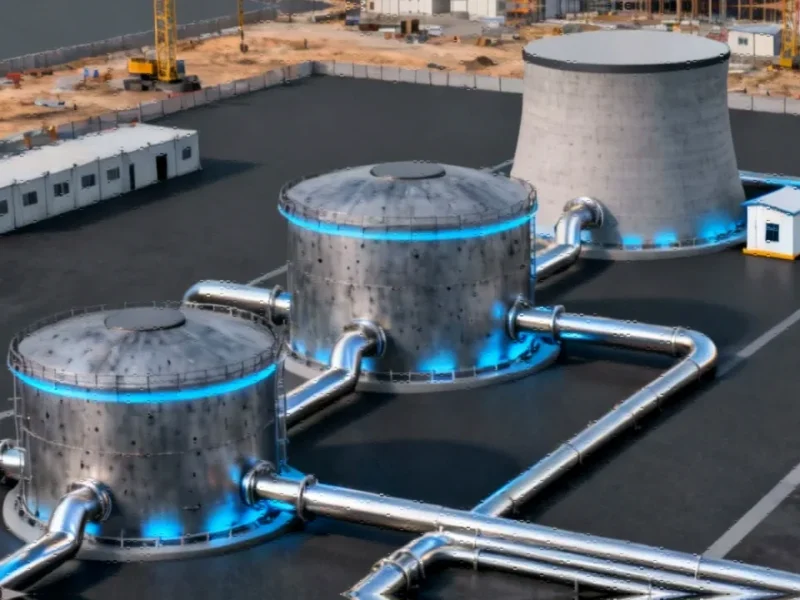The Unprecedented Scale of OpenAI’s Stargate Initiative
OpenAI’s Stargate project represents what may become the single largest private infrastructure investment in technological history, with projected costs reaching $500 billion and energy requirements equivalent to powering a major metropolitan area. This ambitious undertaking signals a fundamental shift in how artificial intelligence infrastructure will be built and powered, with implications reaching far beyond the AI sector into industrial computing, energy grids, and global economic development.
The staggering scale becomes apparent when examining the power requirements alone. Stargate’s ultimate configuration will demand approximately 10 gigawatts of electricity—enough to power a city the size of New York City with energy to spare. This massive power consumption highlights the growing convergence between advanced computing infrastructure and industrial-scale energy management, creating new challenges and opportunities for power providers and industrial computing specialists alike.
Strategic Geographic Distribution of AI Infrastructure
OpenAI has strategically selected multiple locations for its data center buildout, including sites in Shackelford County, Texas; Doña Ana County, New Mexico; Lordstown, Ohio; Milam County, Texas; and an unnamed Midwest location. This geographic diversification reflects a sophisticated approach to infrastructure planning that balances energy availability, cooling requirements, economic incentives, and redundancy considerations.
The selection of these specific regions demonstrates how major technology projects are increasingly influencing regional investment cycles and industrial development patterns. As these facilities come online, they’re likely to create ripple effects throughout local economies, driving demand for specialized industrial computing equipment, advanced cooling systems, and power distribution infrastructure.
The Industrial Computing Implications
For the industrial computing sector, projects like Stargate represent both a validation of existing technology roadmaps and a challenge to innovate further. The extreme computational demands of next-generation AI models require industrial-grade computing solutions that can operate reliably at unprecedented scales while managing thermal output and power efficiency.
This massive infrastructure expansion coincides with other significant technology developments that are pushing the boundaries of what’s possible in computing hardware. As consumer and industrial computing needs continue to converge, the innovations driven by projects like Stargate may eventually trickle down to benefit broader industrial applications.
Power Management at Industrial Scale
The energy requirements of Stargate highlight a critical challenge facing the entire technology sector: how to scale computational capacity without overwhelming existing power infrastructure. At 10 gigawatts, Stargate alone would represent a significant portion of many regional grids’ total capacity, necessitating innovative approaches to power sourcing, distribution, and backup systems.
This scale of power consumption is driving renewed interest in advanced power management technologies and alternative energy sources. The project’s success may depend on breakthroughs in energy efficiency that could have far-reaching implications for industrial computing applications beyond AI, including manufacturing automation, scientific research, and telecommunications infrastructure.
Broader Market and Policy Implications
The staggering investment behind Stargate—$500 billion represents more than the GDP of many countries—underscores how capital-intensive the AI arms race has become. This level of spending is reshaping corporate investment strategies and forcing competitors to reconsider their own infrastructure roadmaps.
Meanwhile, the political dimensions of such massive private investments cannot be overlooked, particularly as bipartisan efforts struggle to address the regulatory and infrastructure challenges posed by rapid technological advancement. The tension between innovation acceleration and responsible governance will likely intensify as projects of this scale become more common.
The Future of AI Infrastructure
Looking beyond Stargate, the global demand for AI computing capacity shows no signs of slowing. Research from RAND projects that global data center demand could reach 68 gigawatts by 2027 and 327 gigawatts by 2030—figures that would have seemed unimaginable just a few years ago.
This projected growth suggests that Stargate may be just the beginning of a much larger transformation in how computational resources are deployed and managed. For those tracking AI infrastructure developments, the lessons learned from OpenAI’s ambitious project will likely inform future industrial computing initiatives across multiple sectors.
As these industry developments continue to unfold, the boundary between traditional industrial computing and cutting-edge AI infrastructure will increasingly blur, creating new opportunities for innovation while presenting unprecedented challenges in scaling, sustainability, and economic viability.
This article aggregates information from publicly available sources. All trademarks and copyrights belong to their respective owners.



